Related Research Articles

A fire hydrant, fireplug, or firecock (archaic) is a connection point by which firefighters can tap into a water supply. It is a component of active fire protection. Underground fire hydrants have been used in Europe and Asia since at least the 18th century. Above-ground pillar-type hydrants are a 19th-century invention.

The Great Baltimore Fire raged in Baltimore, Maryland from Sunday February 7 to Monday February 8, 1904. In the fire, more than 1,500 buildings were completely leveled, and some 1,000 severely damaged, bringing property loss from the disaster to an estimated $100 million. 1,231 firefighters helped bring the blaze under control, both professional paid truck and engine companies from the Baltimore City Fire Department (B.C.F.D.) and volunteers from the surrounding counties and outlying towns of Maryland, as well as out-of-state units that arrived on the major railroads. It destroyed much of central Baltimore, including over 1,500 buildings covering an area of some 140 acres (57 ha).
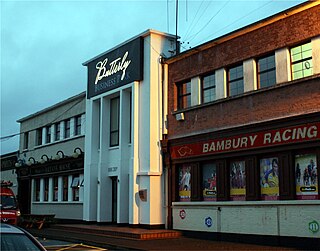
The Stardust fire was a fatal fire which took place at the Stardust nightclub in Artane, Dublin, Ireland, in the early hours of 14 February 1981. More than 800 people were attending a disco there, of whom 48 died and 214 were injured as a result of the fire; in later years suicides of survivors and family members were also linked to the event.

The London Fire Brigade (LFB) is the fire and rescue service for London, the capital of the United Kingdom. It was formed by the Metropolitan Fire Brigade Act 1865, under the leadership of superintendent Eyre Massey Shaw. It has 5,992 staff, including 5,096 operational firefighters and officers based at 102 fire stations.

The Cavan Orphanage fire occurred on the night of 23 February 1943 at St Joseph's Orphanage in Cavan, Ireland. 35 children and 1 adult employee died as a result. Much of the attention after the fire surrounded the role of the Poor Clares, the order of nuns who ran the orphanage, and the local fire service.

Dublin Fire Brigade is the fire and rescue service and ambulance service for County Dublin, including Dublin city, in Ireland. It is a local authority service, operated by Dublin City Council on behalf of that council and those of Fingal, Dún Laoghaire–Rathdown and South Dublin. There are currently 14 fire stations staffed by DFB, 12 of which are full-time, the other 2 are "retained" and operate on call 24/7 365 days a year with up to 500 calls per year. Full-time stations are staffed by shifts across 4 watches. There are currently over 963 active firefighter/paramedic personnel making it by far the largest fire service based on personnel and resources in Ireland.
The Central Hotel fire, was a fire at a popular family-owned hotel in the heart of the seaside resort of Bundoran, County Donegal, in the northwest of Ireland. On 8 August 1980, a fire broke out killing ten people, including both locals and holiday makers. The tragedy was covered as part of the RTÉ television series Disasters in summer 2007.
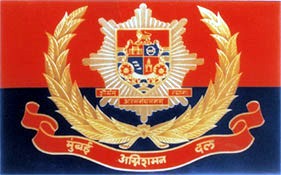
The Mumbai Fire Brigade is the fire brigade serving the city of Mumbai, India. It is responsible for the provision of fire protection as well as responding to building collapses, drownings, gas leakage, oil spillage, road and rail accidents, bird and animal rescues, fallen trees and taking appropriate action during natural disasters.
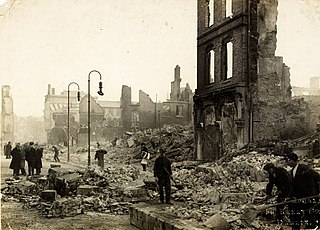
The burning of Cork by British forces took place on the night of 11–12 December 1920, during the Irish War of Independence. It followed an Irish Republican Army (IRA) ambush of a British Auxiliary patrol in the city, which wounded twelve Auxiliaries, one fatally. In retaliation, the Auxiliaries, Black and Tans and British soldiers burned homes near the ambush site, before looting and burning numerous buildings in the centre of Cork, Ireland's third-biggest city. Many Irish civilians reported being beaten, shot at, and robbed by British forces. Firefighters testified that British forces hindered their attempts to tackle the blazes by intimidation, cutting their hoses and shooting at them. Two unarmed IRA volunteers were also shot dead at their home in the north of the city.
The Lakanal House fire occurred in a tower block on 3 July 2009 in Camberwell, London. Six people were killed, and at least twenty injured, when a high-rise fire, caused by a faulty television set, developed and spread through a number of flats in the twelve-storey building.

The Evansville Standpipe is a historic water tower located in Evansville, Wisconsin. The 80-ft tall steel tower was built in 1901 by the Chicago Bridge & Iron Company, as part of the development of the local water supply system, spurred on by a devastating fire in 1896 that destroyed a large section of downtown Evansville. It was added to the National Register of Historic Places in 2008.
The San Rafael Fire Department (SRFD) provides fire and emergency medical services to the City of San Rafael, California. The San Rafael Fire Department serves an estimated population of 72,000 people with approximately 70 firefighting and emergency medical field personnel. The ISO Class 1 department responds to, on average, approximately 9,000 emergency calls annually, with about 70% being emergency medical calls. EMS patients are transported to the hospital of their choice, unless the call is urgent.

The Great New York City Fire of 1845 broke out on July 19, 1845, in Lower Manhattan, New York City. The fire started in a whale oil and candle manufacturing establishment and quickly spread to other wooden structures. It reached a warehouse on Broad Street where combustible saltpeter was stored and caused a massive explosion that spread the fire even farther.
The Top Storey Club was a nightclub in Bolton, Greater Manchester, England. It achieved notoriety for a fire which occurred on 1 May 1961 in which 19 people perished.
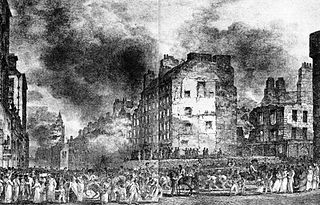
The Great Fire of Edinburgh was one of the most destructive fires in the history of Edinburgh. It started on Monday, 15 November 1824, and lasted for five days, with two major phases.
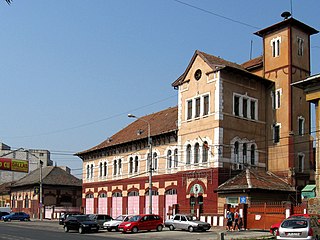
The Iosefin Fire Station is a historical monument in Timișoara, Romania, designed by Hungarian architect László Székely in the so-called "1900s style". It was built in the Iosefin district, near the old fire station, on the site of the old watchtower. It is currently the headquarters of Timișoara Fire Department 2.
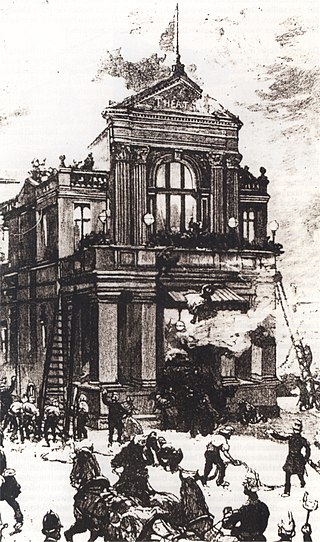
On 5 September 1887, a fire broke out in the backstage area of the Theatre Royal in Exeter, England, during the production of The Romany Rye. The fire caused panic throughout the theatre, with 186 people dying from a combination of the direct effects of smoke and flame, crushing and trampling, and trauma injuries from falling or jumping from the roof and balconies.

The Exeter City Fire Brigade was the first municipal fire brigade in Exeter, Devon, United Kingdom. The brigade was formed in 1888, on the recommendation of Captain Sir Eyre Shaw, the Chief Officer of the Metropolitan Fire Brigade, who conducted a parliamentary inquiry into the Exeter Theatre Royal fire during which 186 people died, making it still the worst-ever building fire death toll in the UK.

The 1970 Dublin fires were a number of arson attacks in Dublin, Ireland in 1970. At the time, the series of fires were rumoured to have been caused by the Ulster Volunteer Force following a threat made saying that “Dublin will burn”. Gardaí later stated that they believed that the fires were unrelated to the threats and were most likely the work of arsonists.
References
- Tribunal of Inquiry into the Fire at Pearse Street, Dublin (15 September 1937). Report (PDF). Official publications. Vol. P.2853. Dublin: Stationery Office. Retrieved 9 December 2013.
- Behan, A. P. (Spring 1997). "A Triple Tragedy in Dublin, the Pearse Street Fire, 1936". Dublin Historical Record. Old Dublin Society. 50 (1): 5–24. JSTOR 30101156.
- Geraghty, Tom; Whitehead, Trevor (2004). "14: Re-organisation and the "Emergency"". The Dublin Fire Brigade: A History of the Brigade, the Fires and the Emergencies. Jeremy Mills Publishing. pp. 206–214. ISBN 9780946841714 . Retrieved 9 December 2013.
Footnotes
- ↑ "Dublin honours heroic firefighters". breakingnews.ie. 30 April 2008. Retrieved 9 December 2013.
53°20′38″N6°14′55″W / 53.3438°N 6.2487°W